STA540 Power Amplifier: Datasheet, Pinout and Equivalents
22 kHz kHz 38W W Audio Amplifiers 10.7mm mm 5mm mm 36W W 22V V 15 pins Multiwatt-15 (Vertical, Bent and Staggered Leads)









22 kHz kHz 38W W Audio Amplifiers 10.7mm mm 5mm mm 36W W 22V V 15 pins Multiwatt-15 (Vertical, Bent and Staggered Leads)
The STA540 is a 4-channel, class-AB audio amplifier designed for high-quality sound applications. This article enforces datasheet, pinout, application, circuit, and other details about STA540.

How to Make :DIY: STA540 Speaker Amplifier on veroboard
STA540 Pinout


STA540 CAD Model
Symbol

Footprint
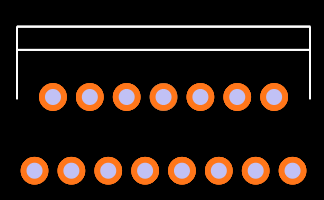
STA540 Description
The STA540 is a 4-channel, class-AB audio amplifier designed for high-quality sound applications. The amplifiers have single-ended outputs with integrated short-circuit protection, thermal protection, and diagnostic functions. The chip is housed in the 15-pin Multiwatt ECOPACK® Pb-free package which is RoHS (2002/95/EC) compliant.
STA540 Block Diagram

STA540 Block Diagram
Specifications
- TypeParameter
- Lifecycle Status
Lifecycle Status refers to the current stage of an electronic component in its product life cycle, indicating whether it is active, obsolete, or transitioning between these states. An active status means the component is in production and available for purchase. An obsolete status indicates that the component is no longer being manufactured or supported, and manufacturers typically provide a limited time frame for support. Understanding the lifecycle status is crucial for design engineers to ensure continuity and reliability in their projects.
ACTIVE (Last Updated: 7 months ago) - Factory Lead Time6 Weeks
- Contact Plating
Contact plating (finish) provides corrosion protection for base metals and optimizes the mechanical and electrical properties of the contact interfaces.
Tin - Mount
In electronic components, the term "Mount" typically refers to the method or process of physically attaching or fixing a component onto a circuit board or other electronic device. This can involve soldering, adhesive bonding, or other techniques to secure the component in place. The mounting process is crucial for ensuring proper electrical connections and mechanical stability within the electronic system. Different components may have specific mounting requirements based on their size, shape, and function, and manufacturers provide guidelines for proper mounting procedures to ensure optimal performance and reliability of the electronic device.
Through Hole - Mounting Type
The "Mounting Type" in electronic components refers to the method used to attach or connect a component to a circuit board or other substrate, such as through-hole, surface-mount, or panel mount.
Through Hole - Package / Case
refers to the protective housing that encases an electronic component, providing mechanical support, electrical connections, and thermal management.
Multiwatt-15 (Vertical, Bent and Staggered Leads) - Number of Pins15
- Operating Temperature
The operating temperature is the range of ambient temperature within which a power supply, or any other electrical equipment, operate in. This ranges from a minimum operating temperature, to a peak or maximum operating temperature, outside which, the power supply may fail.
0°C~70°C TA - Packaging
Semiconductor package is a carrier / shell used to contain and cover one or more semiconductor components or integrated circuits. The material of the shell can be metal, plastic, glass or ceramic.
Tube - Part Status
Parts can have many statuses as they progress through the configuration, analysis, review, and approval stages.
Active - Moisture Sensitivity Level (MSL)
Moisture Sensitivity Level (MSL) is a standardized rating that indicates the susceptibility of electronic components, particularly semiconductors, to moisture-induced damage during storage and the soldering process, defining the allowable exposure time to ambient conditions before they require special handling or baking to prevent failures
1 (Unlimited) - Number of Terminations15
- ECCN Code
An ECCN (Export Control Classification Number) is an alphanumeric code used by the U.S. Bureau of Industry and Security to identify and categorize electronic components and other dual-use items that may require an export license based on their technical characteristics and potential for military use.
EAR99 - TypeClass AB
- Max Power Dissipation
The maximum power that the MOSFET can dissipate continuously under the specified thermal conditions.
36W - Voltage - Supply
Voltage - Supply refers to the range of voltage levels that an electronic component or circuit is designed to operate with. It indicates the minimum and maximum supply voltage that can be applied for the device to function properly. Providing supply voltages outside this range can lead to malfunction, damage, or reduced performance. This parameter is critical for ensuring compatibility between different components in a circuit.
8V~22V - Terminal Position
In electronic components, the term "Terminal Position" refers to the physical location of the connection points on the component where external electrical connections can be made. These connection points, known as terminals, are typically used to attach wires, leads, or other components to the main body of the electronic component. The terminal position is important for ensuring proper connectivity and functionality of the component within a circuit. It is often specified in technical datasheets or component specifications to help designers and engineers understand how to properly integrate the component into their circuit designs.
ZIG-ZAG - Number of Functions1
- Terminal Pitch
The center distance from one pole to the next.
1.27mm - Base Part Number
The "Base Part Number" (BPN) in electronic components serves a similar purpose to the "Base Product Number." It refers to the primary identifier for a component that captures the essential characteristics shared by a group of similar components. The BPN provides a fundamental way to reference a family or series of components without specifying all the variations and specific details.
STA540 - Pin Count
a count of all of the component leads (or pins)
15 - Output Type
The "Output Type" parameter in electronic components refers to the type of signal or data that is produced by the component as an output. This parameter specifies the nature of the output signal, such as analog or digital, and can also include details about the voltage levels, current levels, frequency, and other characteristics of the output signal. Understanding the output type of a component is crucial for ensuring compatibility with other components in a circuit or system, as well as for determining how the output signal can be utilized or processed further. In summary, the output type parameter provides essential information about the nature of the signal that is generated by the electronic component as its output.
2-Channel (Stereo) or 4-Channel (Quad) - Operating Supply Voltage
The voltage level by which an electrical system is designated and to which certain operating characteristics of the system are related.
18V - Supply Voltage-Max (Vsup)
The parameter "Supply Voltage-Max (Vsup)" in electronic components refers to the maximum voltage that can be safely applied to the component without causing damage. It is an important specification to consider when designing or using electronic circuits to ensure the component operates within its safe operating limits. Exceeding the maximum supply voltage can lead to overheating, component failure, or even permanent damage. It is crucial to adhere to the specified maximum supply voltage to ensure the reliable and safe operation of the electronic component.
22V - Supply Voltage-Min (Vsup)
The parameter "Supply Voltage-Min (Vsup)" in electronic components refers to the minimum voltage level required for the component to operate within its specified performance range. This parameter indicates the lowest voltage that can be safely applied to the component without risking damage or malfunction. It is crucial to ensure that the supply voltage provided to the component meets or exceeds this minimum value to ensure proper functionality and reliability. Failure to adhere to the specified minimum supply voltage may result in erratic behavior, reduced performance, or even permanent damage to the component.
8V - Number of Channels4
- Power Dissipation
the process by which an electronic or electrical device produces heat (energy loss or waste) as an undesirable derivative of its primary action.
36W - Output Power
That power available at a specified output of a device under specified conditions of operation.
34W - Supply Type
Supply Type in electronic components refers to the classification of power sources used to operate the component. It indicates whether the component requires DC or AC power, and if DC, specifies the voltage levels such as low, medium, or high. Different supply types can affect the performance, compatibility, and application of the component in electronic circuits. Understanding the supply type is crucial for proper component selection and integration into electronic designs.
Single - Bandwidth
In electronic components, "Bandwidth" refers to the range of frequencies over which the component can effectively operate or pass signals without significant loss or distortion. It is a crucial parameter for devices like amplifiers, filters, and communication systems. The bandwidth is typically defined as the difference between the upper and lower frequencies at which the component's performance meets specified criteria, such as a certain level of signal attenuation or distortion. A wider bandwidth indicates that the component can handle a broader range of frequencies, making it more versatile for various applications. Understanding the bandwidth of electronic components is essential for designing and optimizing circuits to ensure proper signal transmission and reception within the desired frequency range.
22 kHz - Voltage Gain
Voltage gain is a measure of how much an electronic component or circuit amplifies an input voltage signal to produce an output voltage signal. It is typically expressed as a ratio or in decibels (dB). A higher voltage gain indicates a greater amplification of the input signal. Voltage gain is an important parameter in amplifiers, where it determines the level of amplification provided by the circuit. It is calculated by dividing the output voltage by the input voltage and is a key factor in determining the overall performance and functionality of electronic devices.
26dB - Gain
In electronic components, "Gain" refers to the ratio of the output signal amplitude to the input signal amplitude. It is a measure of the amplification provided by the component, such as a transistor or operational amplifier. Gain is typically expressed in decibels (dB) or as a numerical value, indicating how much the signal is amplified by the component.A higher gain value indicates a greater amplification of the input signal, while a lower gain value indicates less amplification. Gain is an important parameter in designing and analyzing electronic circuits, as it determines the overall performance and functionality of the system. Different components have different gain characteristics, and understanding the gain of a component is crucial for achieving the desired signal processing or amplification in electronic systems.
26 dB - Max Output Power
The maximum output power = the maximum output current × the rated output voltage
38W - Max Output Power x Channels @ Load
Max Output Power x Channels @ Load is a specification that describes the maximum power output that an electronic component, such as an amplifier or audio device, can deliver across a certain number of channels at a specific load impedance. This parameter is important for understanding the capability of the component to drive speakers or other devices effectively. The value is typically expressed in watts and can vary depending on the number of channels being used and the impedance of the load. It helps users determine the compatibility of the component with their audio setup and ensures that the component can provide sufficient power for optimal performance.
38W x 2 @ 4 Ω; 16W x 4 @ 4 Ω - Harmonic Distortion
Harmonic distortion is a common parameter used to describe the quality of audio or electronic signals. It refers to the presence of unwanted harmonics or additional frequencies in the output signal that were not present in the input signal. These harmonics are typically multiples of the original signal frequency and can distort the waveform, affecting the overall sound quality or performance of the electronic component. Lower harmonic distortion values indicate a cleaner and more accurate output signal, while higher distortion levels can result in a more distorted or altered sound. Manufacturers often specify harmonic distortion levels in percentage or decibels to help users understand the quality of the component's output.
10% - Load Impedance
Load impedance is a crucial parameter in electronic components that refers to the impedance presented by the load to the output of a circuit or device. It is a measure of how much the load resists the flow of current from the source. Load impedance is typically expressed in ohms and can greatly affect the performance and efficiency of a circuit. Matching the load impedance to the source impedance is important for maximum power transfer and signal integrity in electronic systems. Failure to properly match load impedance can result in signal distortion, power loss, and reduced overall performance of the circuit.
8Ohm - Features
In the context of electronic components, the term "Features" typically refers to the specific characteristics or functionalities that a particular component offers. These features can vary depending on the type of component and its intended use. For example, a microcontroller may have features such as built-in memory, analog-to-digital converters, and communication interfaces like UART or SPI.When evaluating electronic components, understanding their features is crucial in determining whether they meet the requirements of a particular project or application. Engineers and designers often look at features such as operating voltage, speed, power consumption, and communication protocols to ensure compatibility and optimal performance.In summary, the "Features" parameter in electronic components describes the unique attributes and capabilities that differentiate one component from another, helping users make informed decisions when selecting components for their electronic designs.
Short-Circuit and Thermal Protection, Standby - Height10.7mm
- Length19.6mm
- Width5mm
- REACH SVHC
The parameter "REACH SVHC" in electronic components refers to the compliance with the Registration, Evaluation, Authorization, and Restriction of Chemicals (REACH) regulation regarding Substances of Very High Concern (SVHC). SVHCs are substances that may have serious effects on human health or the environment, and their use is regulated under REACH to ensure their safe handling and minimize their impact.Manufacturers of electronic components need to declare if their products contain any SVHCs above a certain threshold concentration and provide information on the safe use of these substances. This information allows customers to make informed decisions about the potential risks associated with using the components and take appropriate measures to mitigate any hazards.Ensuring compliance with REACH SVHC requirements is essential for electronics manufacturers to meet regulatory standards, protect human health and the environment, and maintain transparency in their supply chain. It also demonstrates a commitment to sustainability and responsible manufacturing practices in the electronics industry.
No SVHC - Radiation Hardening
Radiation hardening is the process of making electronic components and circuits resistant to damage or malfunction caused by high levels of ionizing radiation, especially for environments in outer space (especially beyond the low Earth orbit), around nuclear reactors and particle accelerators, or during nuclear accidents or nuclear warfare.
No - RoHS Status
RoHS means “Restriction of Certain Hazardous Substances” in the “Hazardous Substances Directive” in electrical and electronic equipment.
ROHS3 Compliant - Lead Free
Lead Free is a term used to describe electronic components that do not contain lead as part of their composition. Lead is a toxic material that can have harmful effects on human health and the environment, so the electronics industry has been moving towards lead-free components to reduce these risks. Lead-free components are typically made using alternative materials such as silver, copper, and tin. Manufacturers must comply with regulations such as the Restriction of Hazardous Substances (RoHS) directive to ensure that their products are lead-free and environmentally friendly.
Lead Free
STA540 Features
■ High output power capability
– 2x 38 W into 4 Ω at 18 V, 1 kHz, 10% THD
– 2x 34 W into 8 Ω at 22 V, 1 kHz, 10% THD
– 2x 24W into 4Ω at 14.4 V, 1 kHz, 10% THD
– 2x 15 W into 8 Ω at 16 V, 1 kHz, 10% THD
– 4x 13 W into 2 Ω at 15 V, 1 kHz, 10% THD
– 4x 11 W into 4 Ω at 18 V, 1 kHz, 10% THD
– 4x 7 W into 4 Ω at 14.4 V, 1 kHz, 10% THD
■ Minimum external components count:
– no bootstrap capacitors
– no Boucherot cells
– internally fixed gain 20 dB
■ Standby function (CMOS compatible)
■ No audible pop during standby operations
■ Diagnostic facilities:
– clip detector
– output to GND short-circuit detector
– output to VS short-circuit detector
– soft short-circuit check at turn-on
– thermal shutdown warning
STA540 Applications
■ Output AC/DC short circuit
■ Soft short-circuit check at turn-on
■ Thermal cutoff/limiter to prevent the chip from Overheating
■ High inductive loads
■ ESD
STA540 Applications Circuit

STA540 Applications Circuit
STA540 Equivalents
| Part | Compare | Manufacturers | Category | Description |
| E-TDA7375AV | STA540 VS E-TDA7375AV | ST Microelectronics | Audio Amplifiers | Amplifier IC 2Channel (Stereo) or 4Channel (Quad) Class AB 43W x 2 @ 4Ω; 12W x 4 @ 2Ω 15-Multiwatt |
| TDA7375V | STA540 VS TDA7375V | ST Microelectronics | Audio Amplifiers | Audio Amp Speaker 2CH Stereo/4CH Stereo 40W Class-AB 15Pin(15+Tab) MULTIWATT V Tube |
| TDA7375AV | STA540 VS TDA7375AV | ST Microelectronics | Audio Amplifiers | Audio Amp Speaker 1CH Mono/2CH Stereo/4CH Stereo 25W Class-AB 15Pin(15+Tab) MULTIWATT V Tube |
STA540 Package
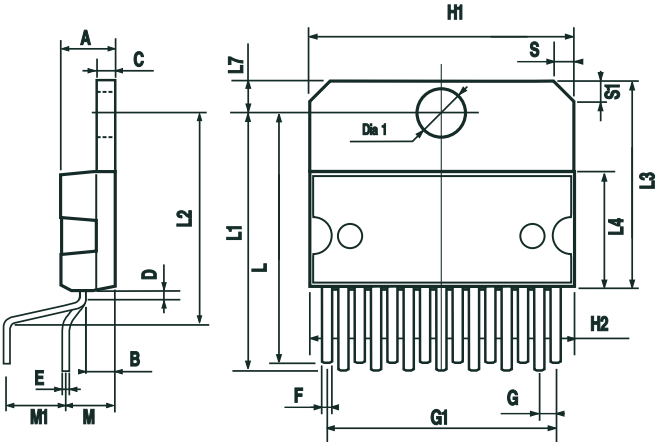
STA540 Manufacturer
STMicroelectronics is a French-Italian multinational electronics and semiconductors manufacturer headquartered in Plan-les-Ouates nearby Geneva, Switzerland resulting from the merger of two government-owned semiconductor companies in 1987: "Thomson Semiconducteurs" of France and "SGS Microelettronica" of Italy. It is commonly called "ST", and it is Europe's largest semiconductor chip maker based on revenue. While STMicroelectronics corporate headquarters and the headquarters for EMEA region are based in Geneva, the holding company, STMicroelectronics N.V. is incorporated in the Netherlands.
Trend Analysis
Datasheet PDF
- Datasheets :
What is STA540 used for?
The STA540 is a 4-channel, Class AB audio amplifier designed for high-quality sound applications. The amplifiers have single-ended outputs with integrated short-circuit protection, thermal protection, and diagnostic functions.
 STM32F051C6T7 Microcontroller: Datasheet, Pinout, Block Diagram
STM32F051C6T7 Microcontroller: Datasheet, Pinout, Block Diagram13 September 20211936
 Where to use B280 High Voltage SCHOTTKY Barrier Rectifier
Where to use B280 High Voltage SCHOTTKY Barrier Rectifier08 April 2022481
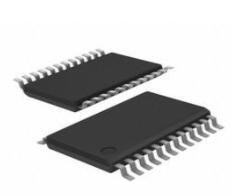 UCC28951-Q1 Controller: Pinout, Datasheet and Application Circuit
UCC28951-Q1 Controller: Pinout, Datasheet and Application Circuit29 March 20221326
 A Comprehensive Guide to Intel RealSense 82635DSITR50P Linear Video Processing Chip
A Comprehensive Guide to Intel RealSense 82635DSITR50P Linear Video Processing Chip11 March 2024393
 A733 PNP Tip Power Transistor: 60V 100mA, TO-92 Plastic A733 Equivalent and Pinout
A733 PNP Tip Power Transistor: 60V 100mA, TO-92 Plastic A733 Equivalent and Pinout18 January 202210846
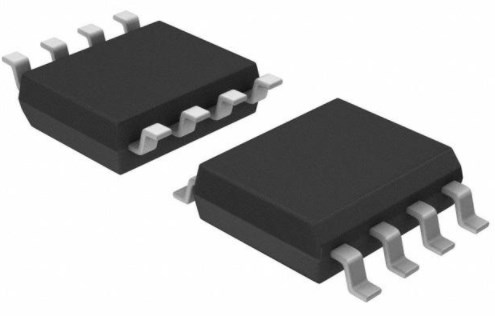 SN65HVD1781DR Transceiver: Circuit, RS-485
SN65HVD1781DR Transceiver: Circuit, RS-48528 March 20221454
 LTC6930MPMS8-8.19#PBF Programmable Timer and Oscillator: Product Overview and Applications
LTC6930MPMS8-8.19#PBF Programmable Timer and Oscillator: Product Overview and Applications06 March 2024207
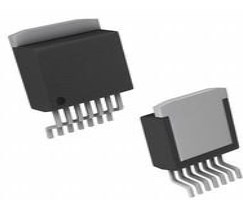 BTS7960 PN Half Bridge: Pinout, Datasheet and Schematic
BTS7960 PN Half Bridge: Pinout, Datasheet and Schematic13 July 202112332
 Tech Giants Accelerate In-House Semiconductor Design, Threatening Fabless Chipmakers
Tech Giants Accelerate In-House Semiconductor Design, Threatening Fabless Chipmakers27 September 20231522
 Understanding RFID Antennas and Their Role in Modern Technology
Understanding RFID Antennas and Their Role in Modern Technology30 June 2025623
 What is a Digital Integrated Circuit and How Do We Use It?
What is a Digital Integrated Circuit and How Do We Use It?20 October 202517057
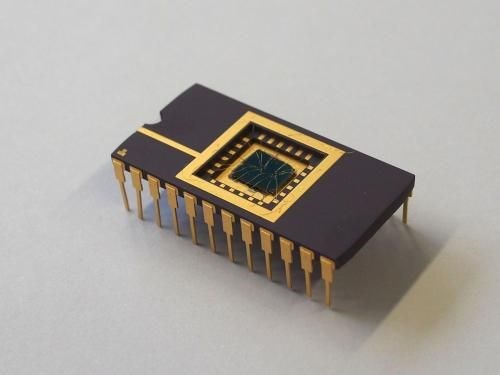 Basic Introduction to Memristor
Basic Introduction to Memristor12 January 20219837
 NOR Flash: Working, Structure and Applications
NOR Flash: Working, Structure and Applications18 November 202112013
 BMW CEO: The Car Chip Problem Will Not Be Solved Until 2023
BMW CEO: The Car Chip Problem Will Not Be Solved Until 202312 April 20223632
 Basic Introduction to System on a Chip
Basic Introduction to System on a Chip02 December 20203527
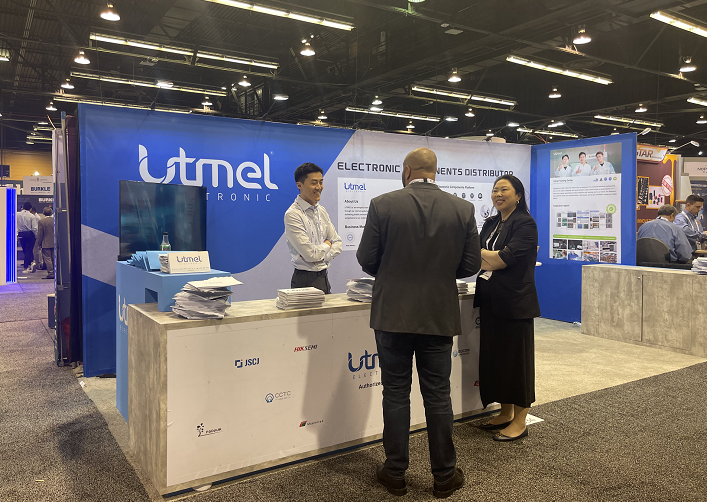 Electronic Components Distributor Utmel to Showcase at 2024 IPC APEX EXPO
Electronic Components Distributor Utmel to Showcase at 2024 IPC APEX EXPO10 April 20243880
STMicroelectronics
In Stock: 15525
United States
China
Canada
Japan
Russia
Germany
United Kingdom
Singapore
Italy
Hong Kong(China)
Taiwan(China)
France
Korea
Mexico
Netherlands
Malaysia
Austria
Spain
Switzerland
Poland
Thailand
Vietnam
India
United Arab Emirates
Afghanistan
Åland Islands
Albania
Algeria
American Samoa
Andorra
Angola
Anguilla
Antigua & Barbuda
Argentina
Armenia
Aruba
Australia
Azerbaijan
Bahamas
Bahrain
Bangladesh
Barbados
Belarus
Belgium
Belize
Benin
Bermuda
Bhutan
Bolivia
Bonaire, Sint Eustatius and Saba
Bosnia & Herzegovina
Botswana
Brazil
British Indian Ocean Territory
British Virgin Islands
Brunei
Bulgaria
Burkina Faso
Burundi
Cabo Verde
Cambodia
Cameroon
Cayman Islands
Central African Republic
Chad
Chile
Christmas Island
Cocos (Keeling) Islands
Colombia
Comoros
Congo
Congo (DRC)
Cook Islands
Costa Rica
Côte d’Ivoire
Croatia
Cuba
Curaçao
Cyprus
Czechia
Denmark
Djibouti
Dominica
Dominican Republic
Ecuador
Egypt
El Salvador
Equatorial Guinea
Eritrea
Estonia
Eswatini
Ethiopia
Falkland Islands
Faroe Islands
Fiji
Finland
French Guiana
French Polynesia
Gabon
Gambia
Georgia
Ghana
Gibraltar
Greece
Greenland
Grenada
Guadeloupe
Guam
Guatemala
Guernsey
Guinea
Guinea-Bissau
Guyana
Haiti
Honduras
Hungary
Iceland
Indonesia
Iran
Iraq
Ireland
Isle of Man
Israel
Jamaica
Jersey
Jordan
Kazakhstan
Kenya
Kiribati
Kosovo
Kuwait
Kyrgyzstan
Laos
Latvia
Lebanon
Lesotho
Liberia
Libya
Liechtenstein
Lithuania
Luxembourg
Macao(China)
Madagascar
Malawi
Maldives
Mali
Malta
Marshall Islands
Martinique
Mauritania
Mauritius
Mayotte
Micronesia
Moldova
Monaco
Mongolia
Montenegro
Montserrat
Morocco
Mozambique
Myanmar
Namibia
Nauru
Nepal
New Caledonia
New Zealand
Nicaragua
Niger
Nigeria
Niue
Norfolk Island
North Korea
North Macedonia
Northern Mariana Islands
Norway
Oman
Pakistan
Palau
Palestinian Authority
Panama
Papua New Guinea
Paraguay
Peru
Philippines
Pitcairn Islands
Portugal
Puerto Rico
Qatar
Réunion
Romania
Rwanda
Samoa
San Marino
São Tomé & Príncipe
Saudi Arabia
Senegal
Serbia
Seychelles
Sierra Leone
Sint Maarten
Slovakia
Slovenia
Solomon Islands
Somalia
South Africa
South Sudan
Sri Lanka
St Helena, Ascension, Tristan da Cunha
St. Barthélemy
St. Kitts & Nevis
St. Lucia
St. Martin
St. Pierre & Miquelon
St. Vincent & Grenadines
Sudan
Suriname
Svalbard & Jan Mayen
Sweden
Syria
Tajikistan
Tanzania
Timor-Leste
Togo
Tokelau
Tonga
Trinidad & Tobago
Tunisia
Turkey
Turkmenistan
Turks & Caicos Islands
Tuvalu
U.S. Outlying Islands
U.S. Virgin Islands
Uganda
Ukraine
Uruguay
Uzbekistan
Vanuatu
Vatican City
Venezuela
Wallis & Futuna
Yemen
Zambia
Zimbabwe










